Best dehumidifiers 2025: Fight damp, mold and condensation
Dehumidifiers can help you eliminate bad odors, mold and condensation in your home. These are the best appliances to buy this winter, as chosen by our expert reviewers.
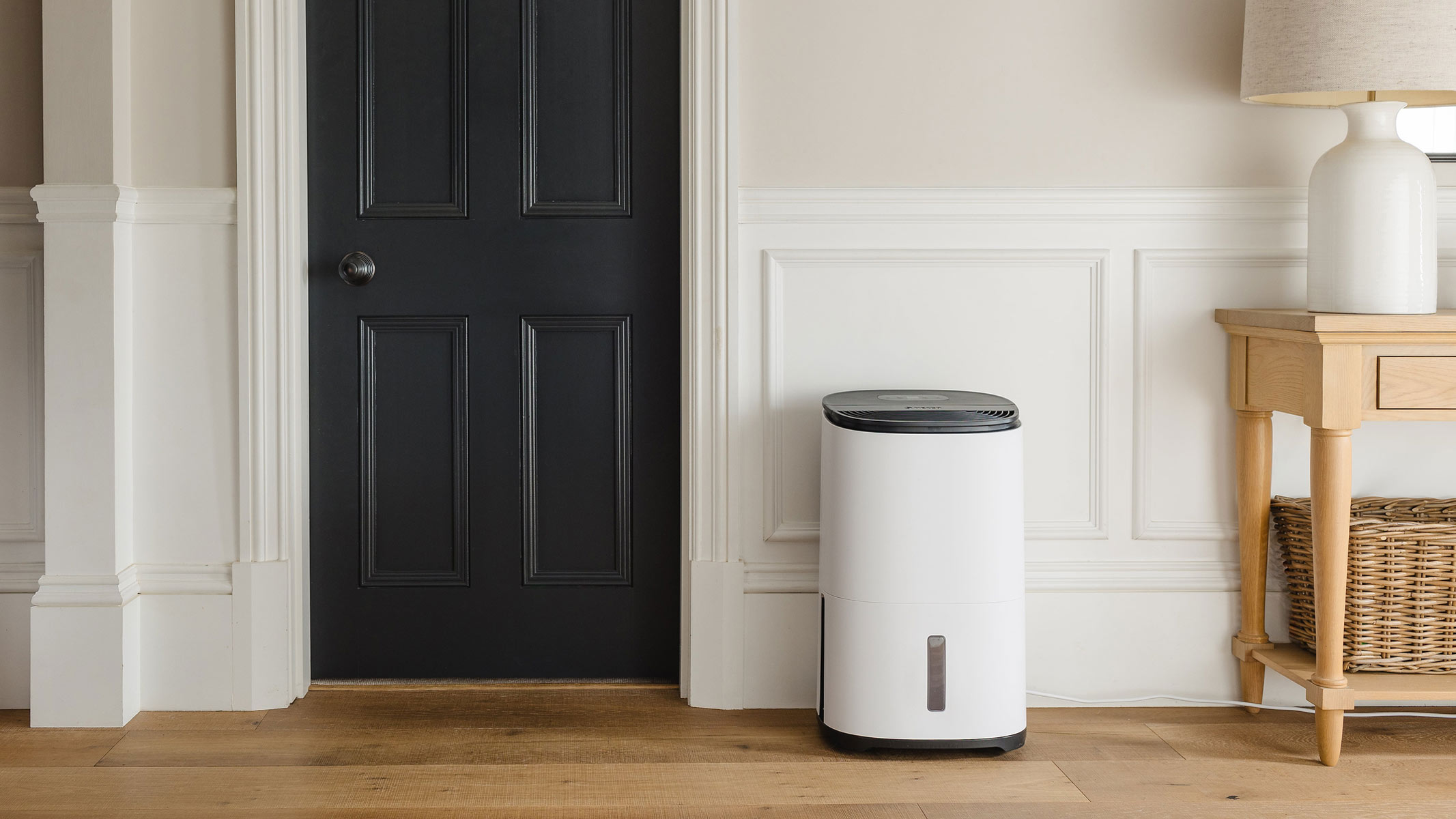
Investing in one of the best dehumidifiers can help you keep your home free from damp and condensation this winter. These clever appliances can be particularly useful for those with asthma and other respiratory conditions. As Wei-Ning Wang, an associate professor of indoor air quality and aerosol technology at Virginia Commonwealth University, told Live Science: “Dehumidifiers are essential tools to lower the relative humidity, which in turn could reduce mold growth and hence increase air quality."
But which dehumidifier should you choose? There are plenty of appliances on the market, from small and portable units like the ProBreeze Mini to beastly performers like the Honeywell TP50WK. To help you make the right choice, we have tried and tested plenty of dehumidifiers using exactly the same testing process.
Unsure whether you even need one of these appliances? Scroll down to our Dehumidifiers FAQs section. Dry air IS the problem? Consider investing in one of the best humidiifers.
At Live Science, we know you want to make the best choice for your home. So we have tried and tested some of the best dehumidifiers on the market to help you pick the right model for you and for your living space. During our dehumidifier testing process, our expert reviewers take into account price, size, design, effectiveness, usability, maintenance, energy use and availability of extra parts.
The quick list
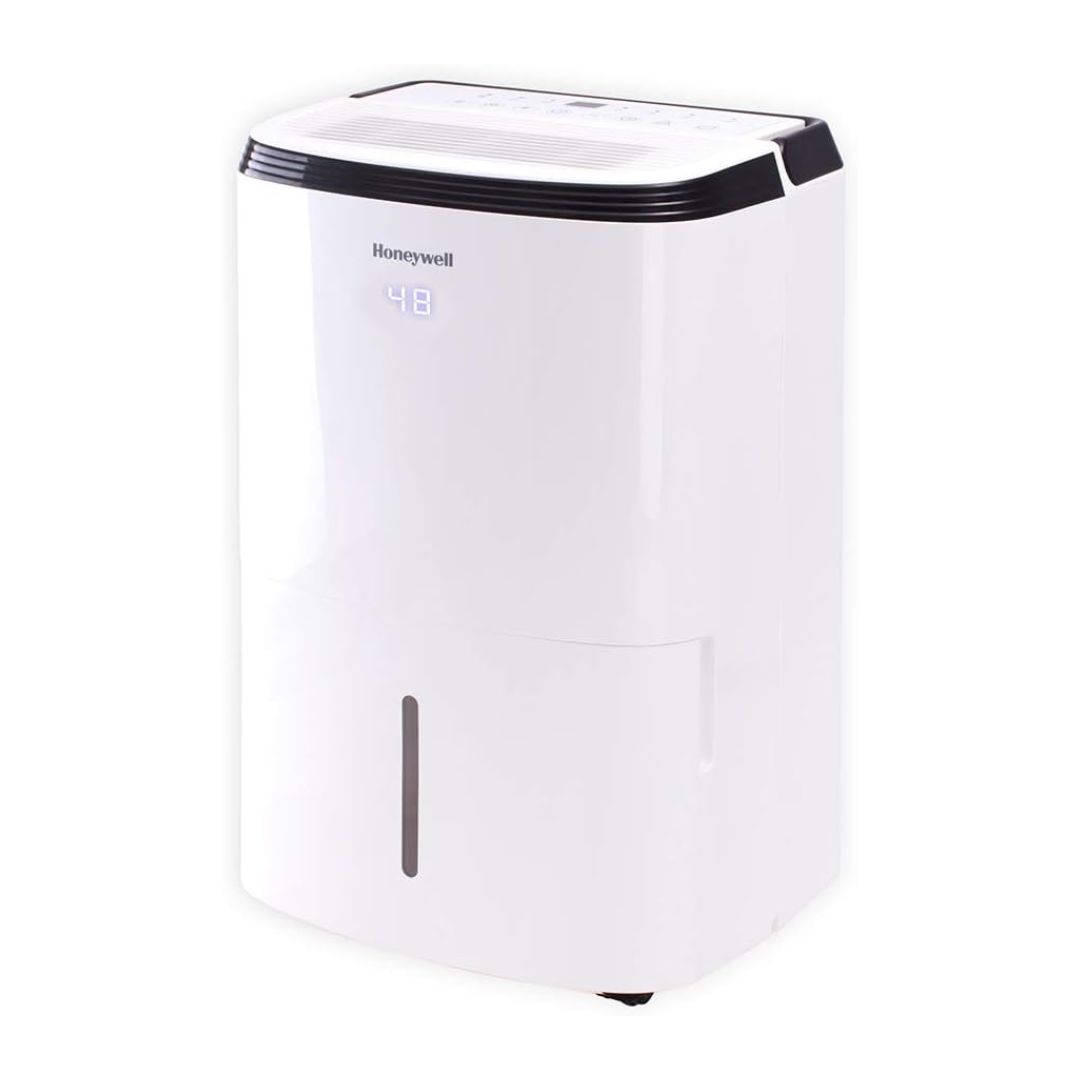
Best overall
It offers excellent performance, low energy use and has a sleek, user-friendly design. The Honeywell TP50WK takes the well-deserved top spot.
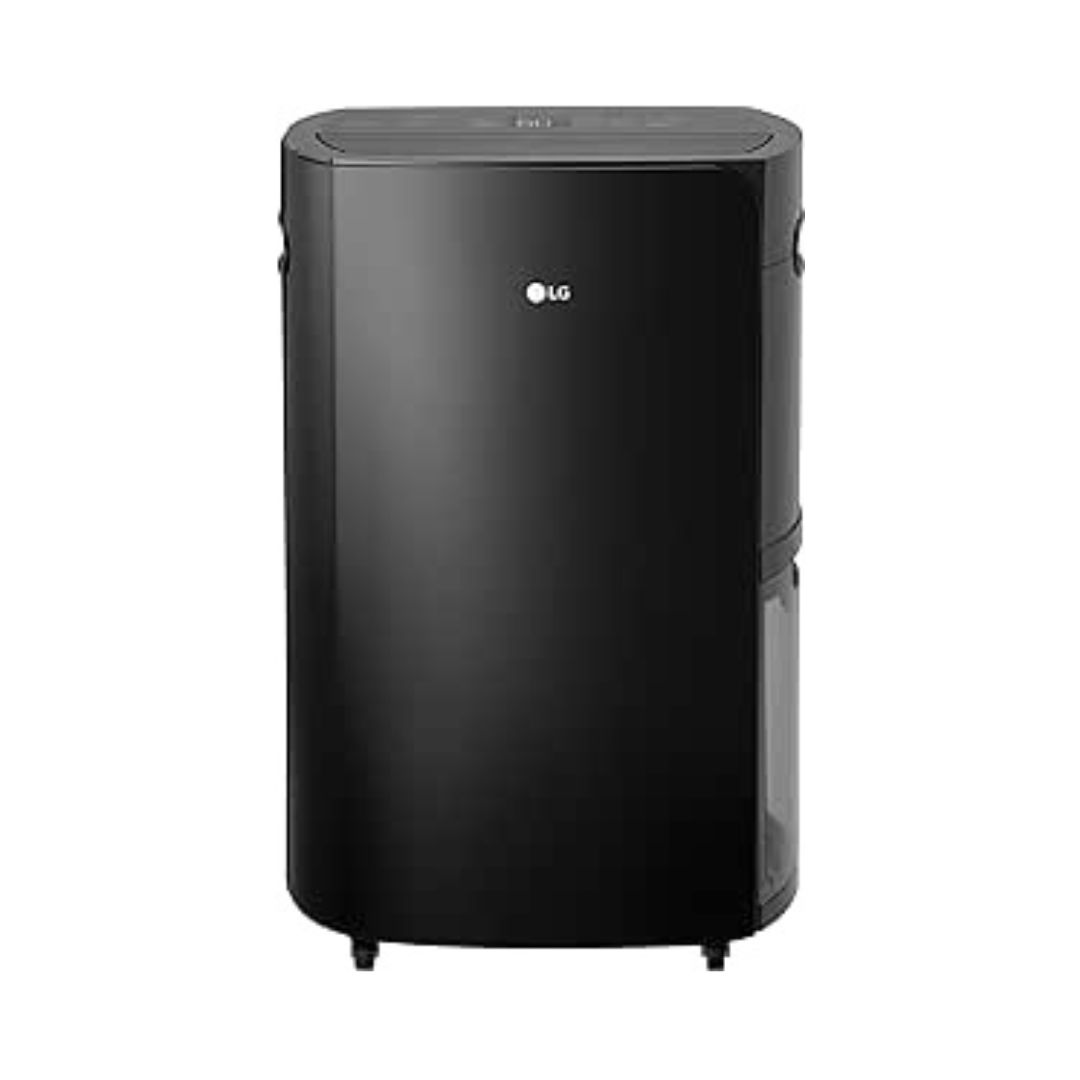
Best for large rooms
This dehumidifier combines powerful performance with stylish looks, making it one of the best options for large rooms and offices. It is, however, on the expensive side.
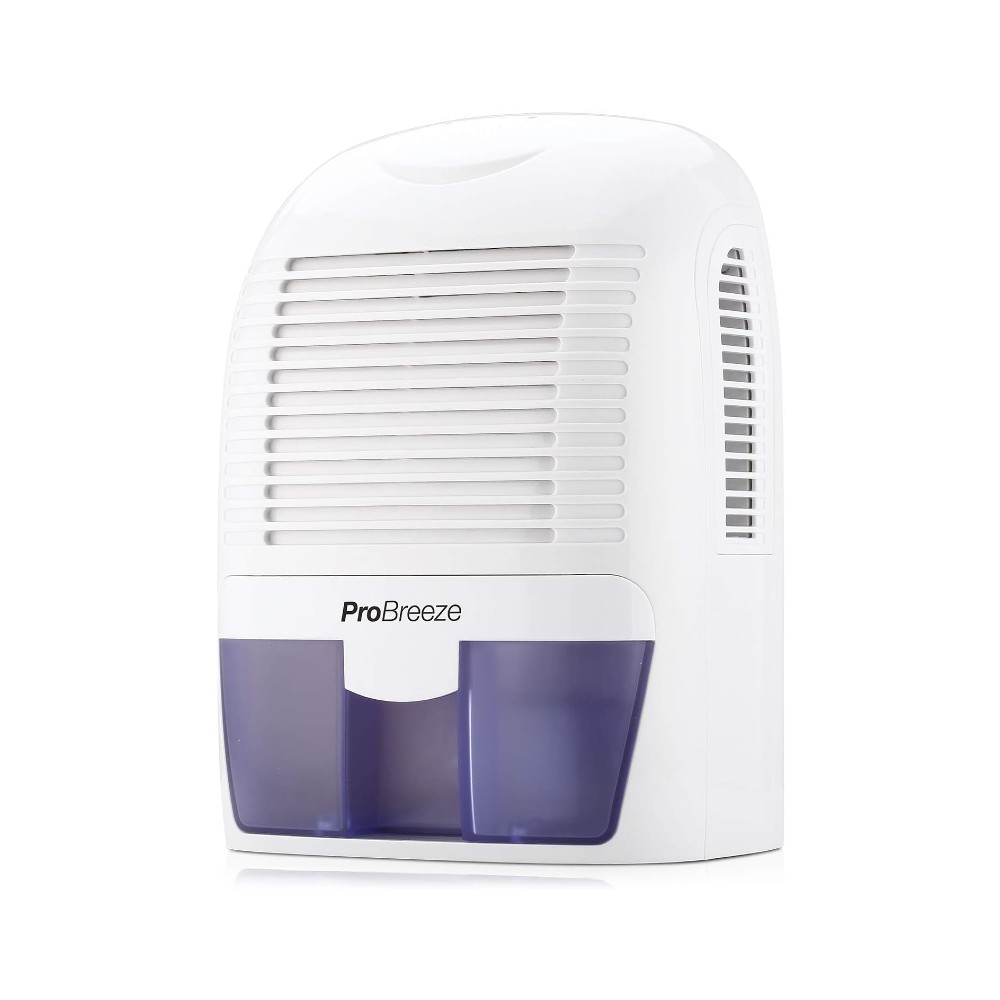
Best mini dehumidifier
The ProBreeze Mini Dehumidifier is exceptionally portable, cheap to run and easy to use, making it a great budget-friendly option for small spaces.
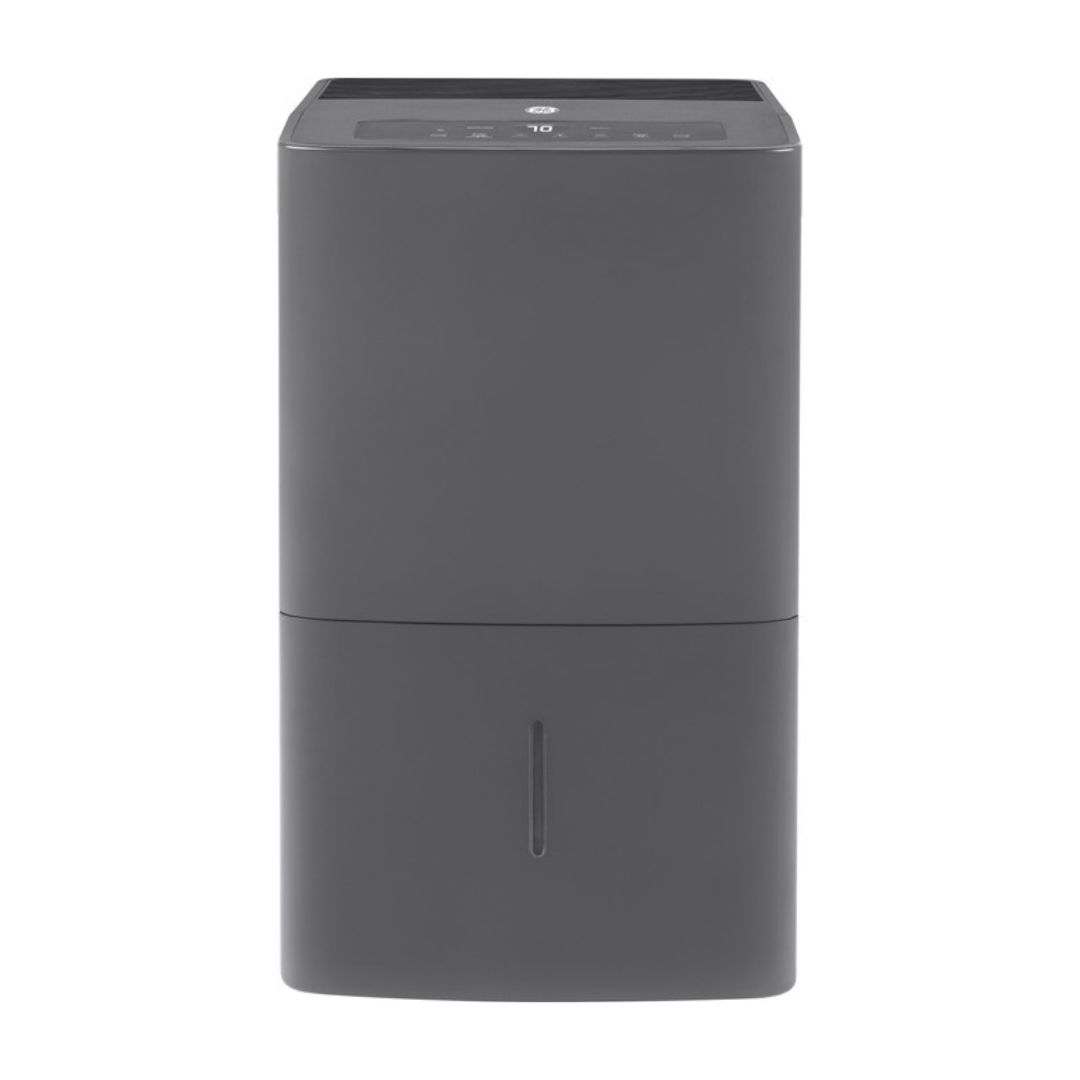
Best for basements
This well-built smart dehumidifier features an active water pump and a long drainage hose — two features particularly useful for drying out damp basements.
The best dehumidifiers we recommend in 2025: Thoroughly tested by our experts with hands-on experience
Why you can trust Live Science
The best dehumidifier overall
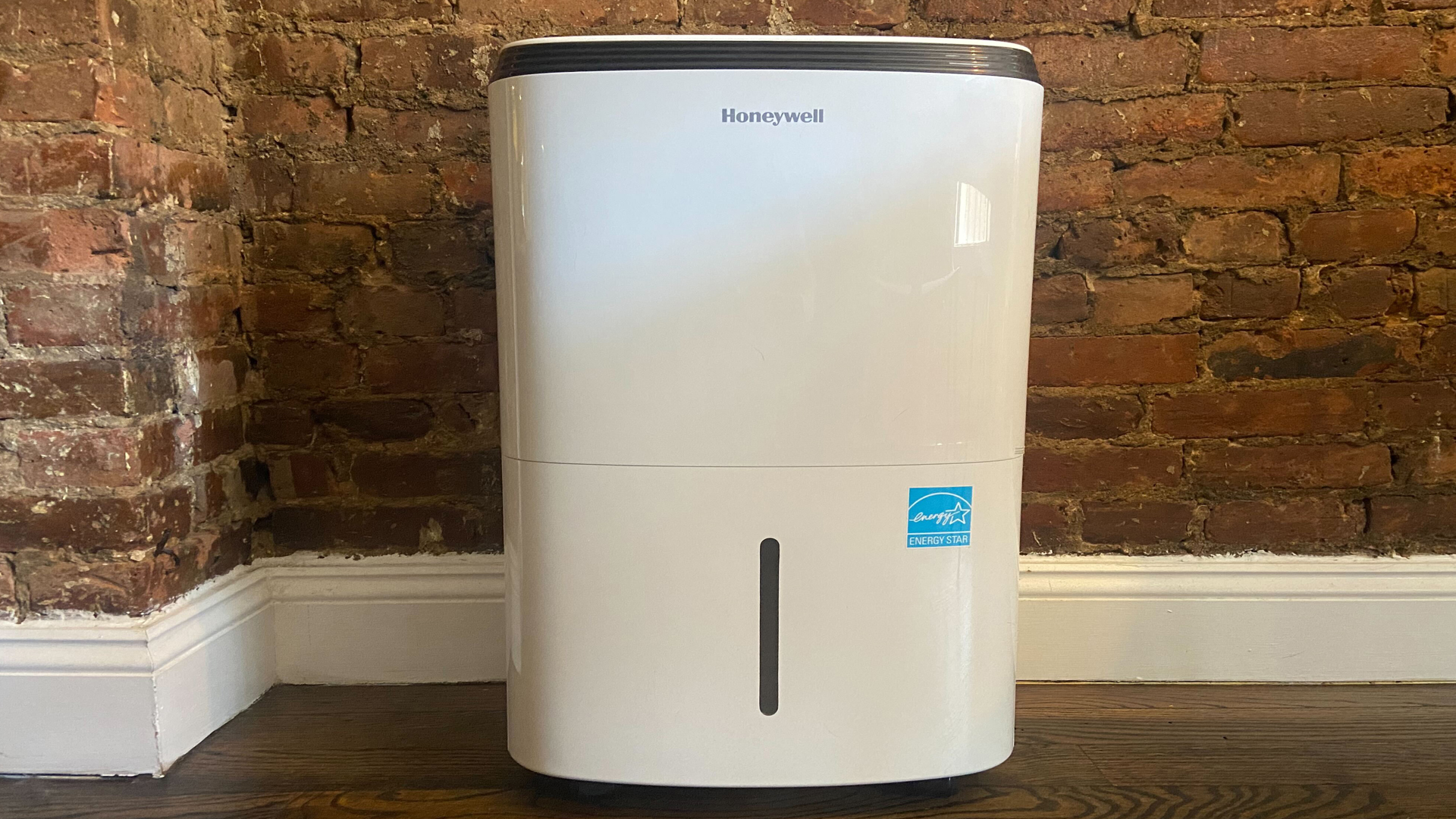
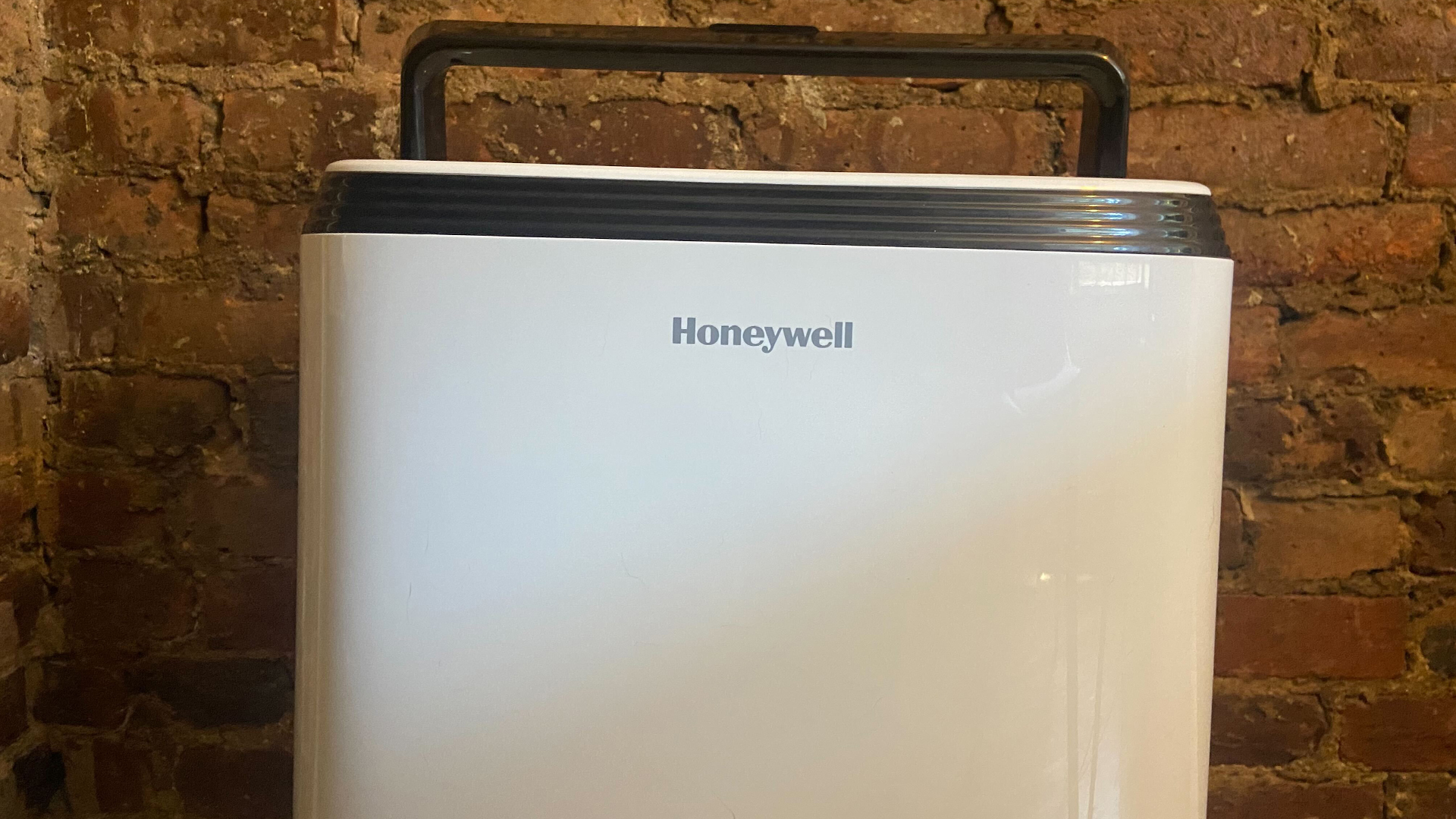
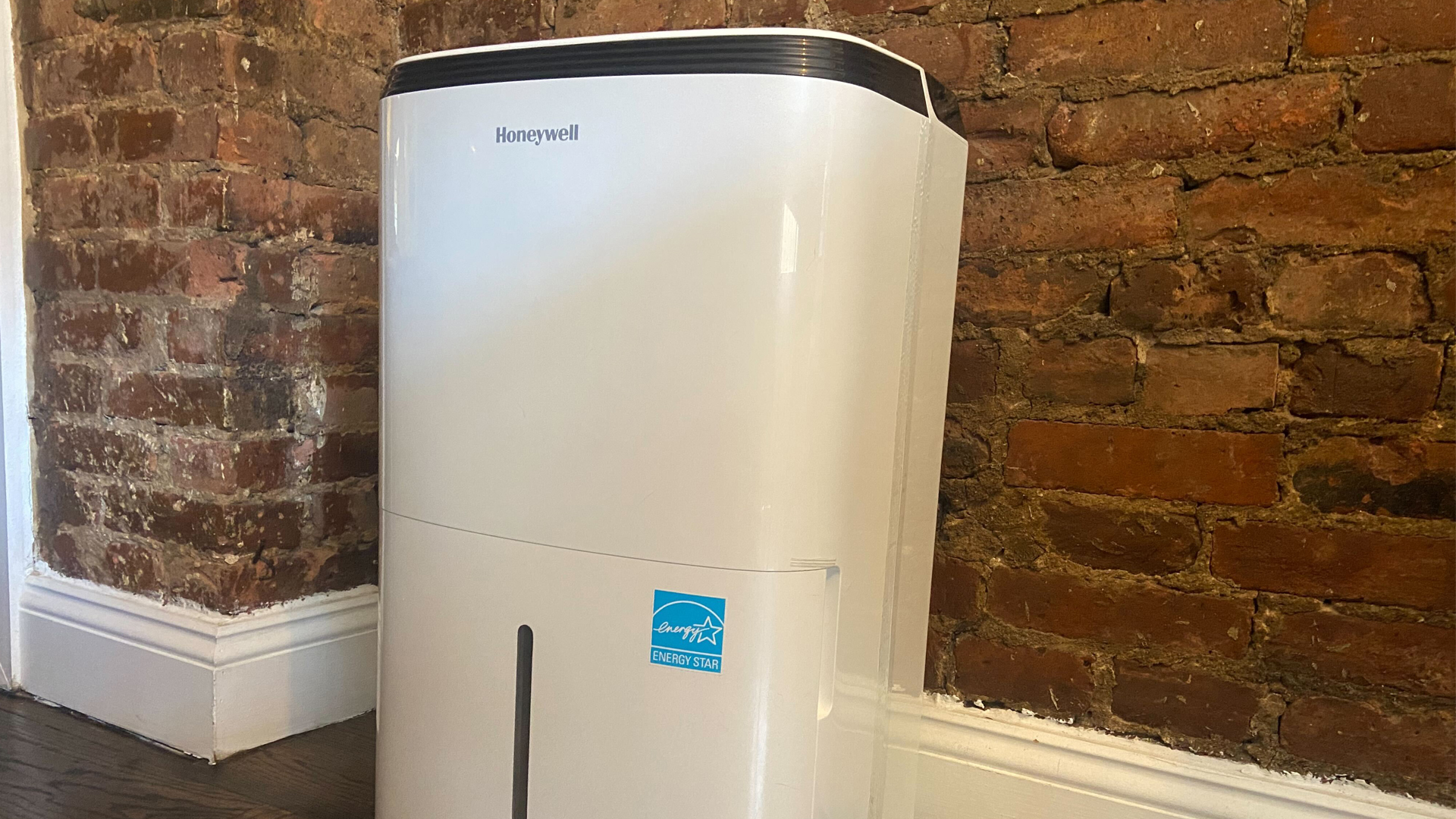
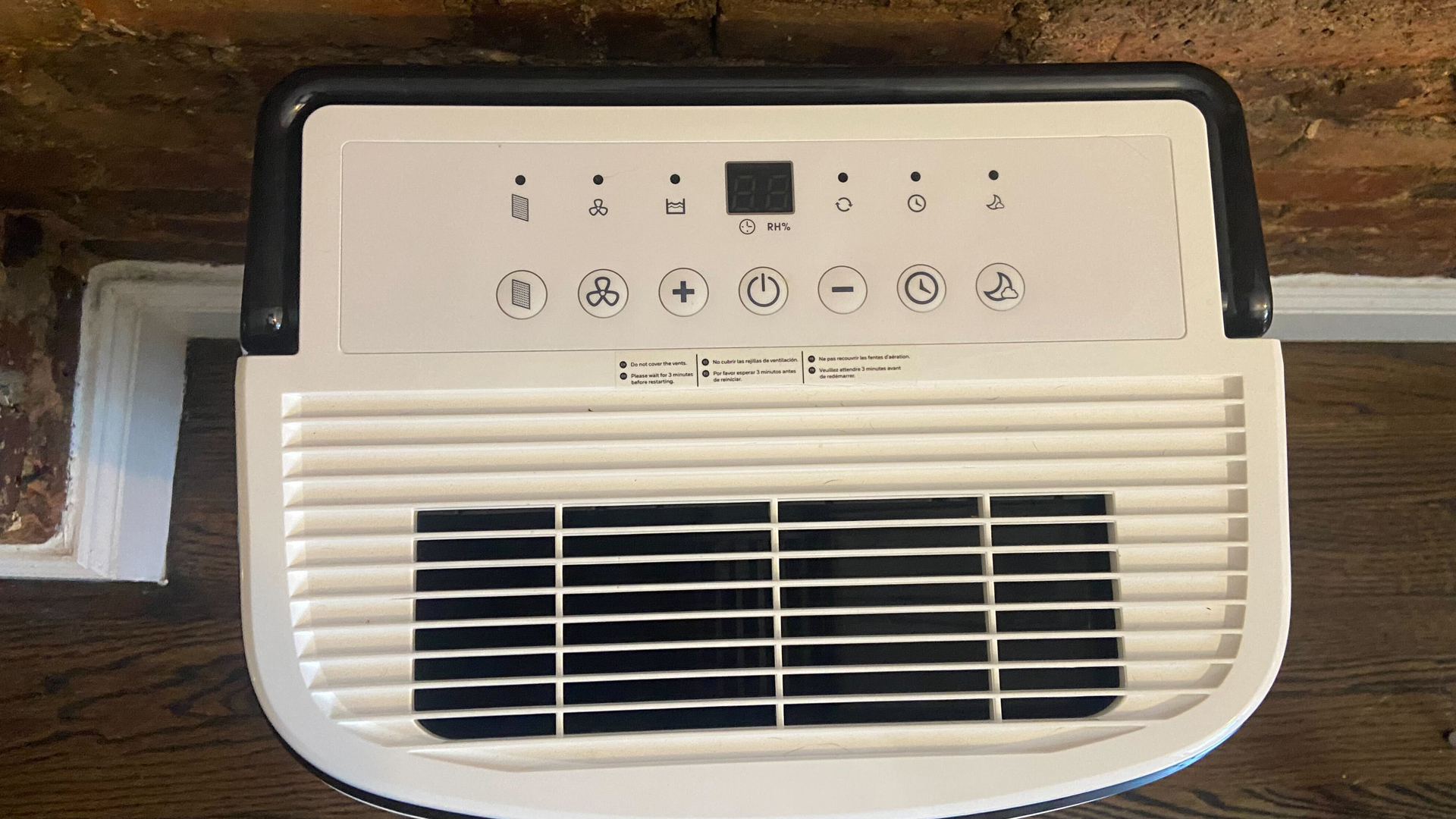
Specifications
Reasons to buy
Reasons to avoid
✅ You want a compact but powerful dehumidifier: The Honeywell TP50WKN is powerful but still very portable.
✅ You want a low-maintenance appliance: This Honeywell model is easy to clean, and comes with plenty of smart features.
✅ You are on a budget: it may not be the cheapest on the market but it is affordable and worth the money
❌ You want a built-in pump: The hose can't be directed into a sink if that is what you are looking for.
❌ You need a long drainage hose: This dehumidifier needs to be placed close to a water reservoir.
🔎 Honeywell TP50WK: This 50-pint dehumidifier combines ease of use with exceptional performance as well as great looks and a compact, portable build. ★★★★
Our best overall best dehumidifier crown goes to the The Honeywell TP50WK. It combines excellent performance and ease of use with a sleek design. And it also comes with a very generous 5-year warranty, which is always reassuring. All this combined to merit the strong 4-star rating we gave it in our in-depth Honeywell TP50WKN dehumidifier review.
This Honeywell model, which is Energy Star-rated, is suitable for spaces of up to 3,000 feet. That makes it a great choice for homes with medium to large rooms. But while it is powerful, it doesn't take up lots of space. In fact the Honeywell TP50WK is a lot smaller and lighter than the LG Puricare 50-pint dehumidifier, despite having the same tank size.
One of the smart features this model offers is a digital control system which actively monitors your space, and changes mode according to the levels of moisture it detects. That means that if you use the continuous drainage mode you can leave it running. However if you prefer to use the water tank, there is also an auto-shutdown feature which stops the machine continuing to run after your water tank is full.
However, one thing to be aware of is that this continuous drain mode is not pump-operated. It relies purely on gravity, meaning you must ensure that the drainage hose isn’t too straight or too long, or water could collect in it or even return back to the unit itself. The tank itself does have splash guards to avoid leaks and splits.
The Honeywell TP50WKA also has a washable dust filter to remove dust and filter your air for other impurities. Another smart feature is the auto-restart mode. If your home experiences a power outage, for example, it will simply start up again without needing to be manually rebooted.
We tested the dehumidifier in a medium-sized living room on a very hot way. When the machine was turned on, the LED display immediately read a humidity level of 89%, which certainly felt accurate. But after just one hour of running the machine, the reading had dropped to 42% humidity, and there was an appreciable difference in the room.
Emptying the dehumidifier’s water bucket was simple while thanks to the model’s built-in wheels and robust handle, moving it around was very easy too.
The controls were very easy to operate, with the digital display very clear. With its clean white finish, the Honeywell TP50WK is an attractive piece of kit that fits discreetly into any space.
The icing on the cake? The Honeywell TP50WK's retail price is just under $300, and it often gets discounted at Amazon and Walmart.
- Read our full Honeywell TP50WK dehumidifier review
| Attributes | Notes |
|---|---|
| Coverage | Up to 3,000 square feet |
| Humidity control | Manual and Auto, digital humidistat |
| Performance | Relatively quiet (55 dB) |
Best dehumidifier for large rooms
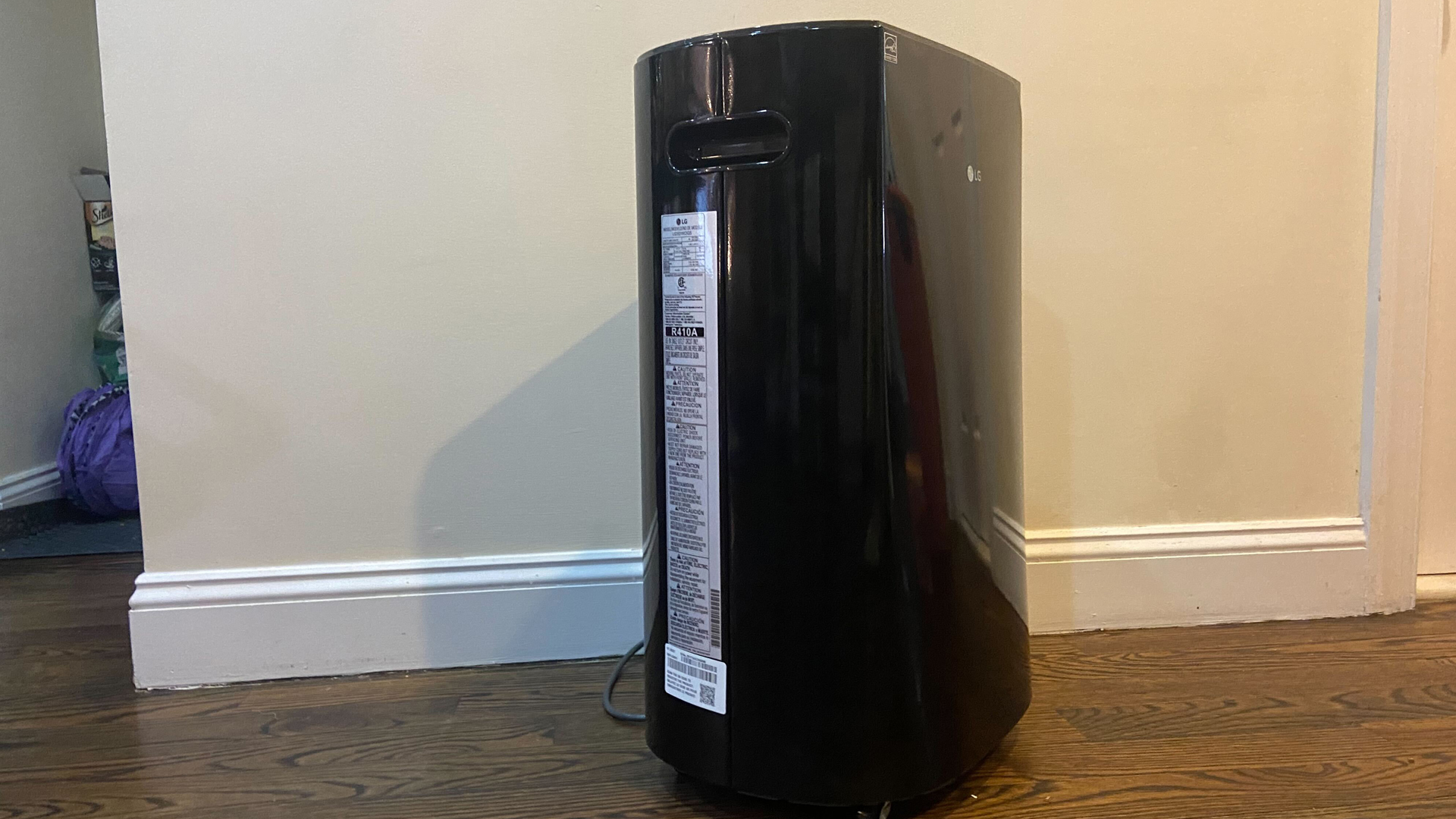
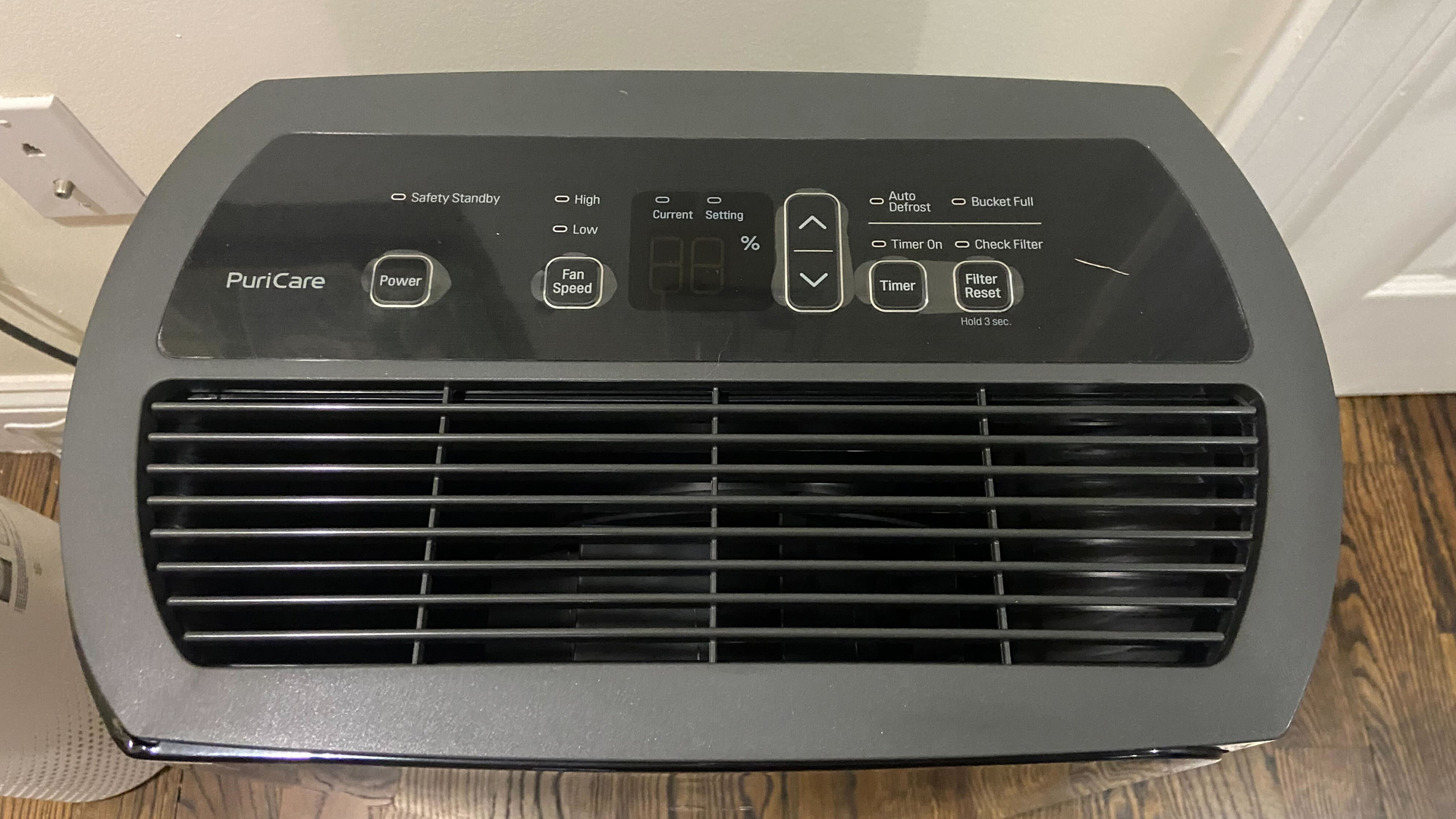
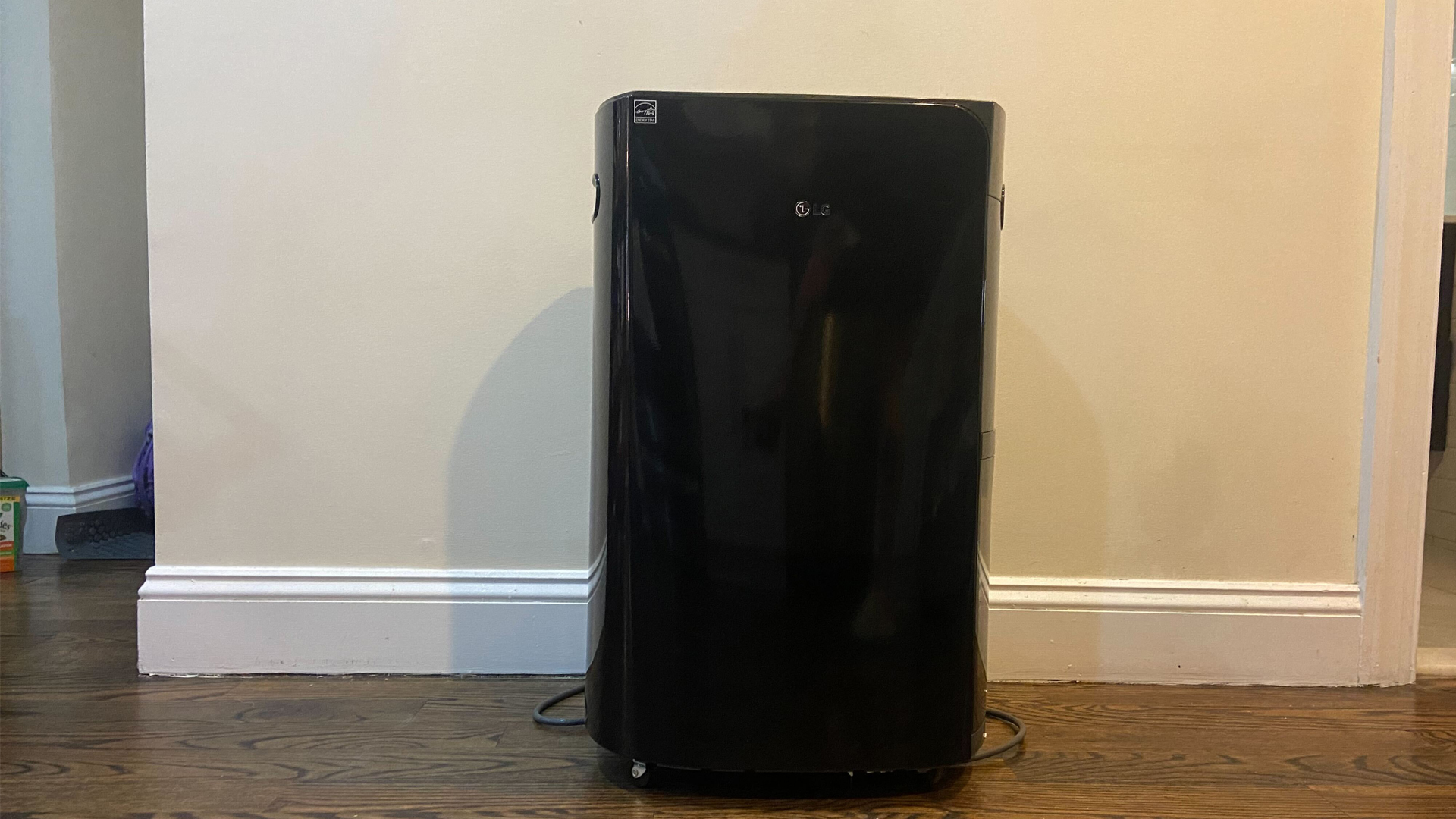
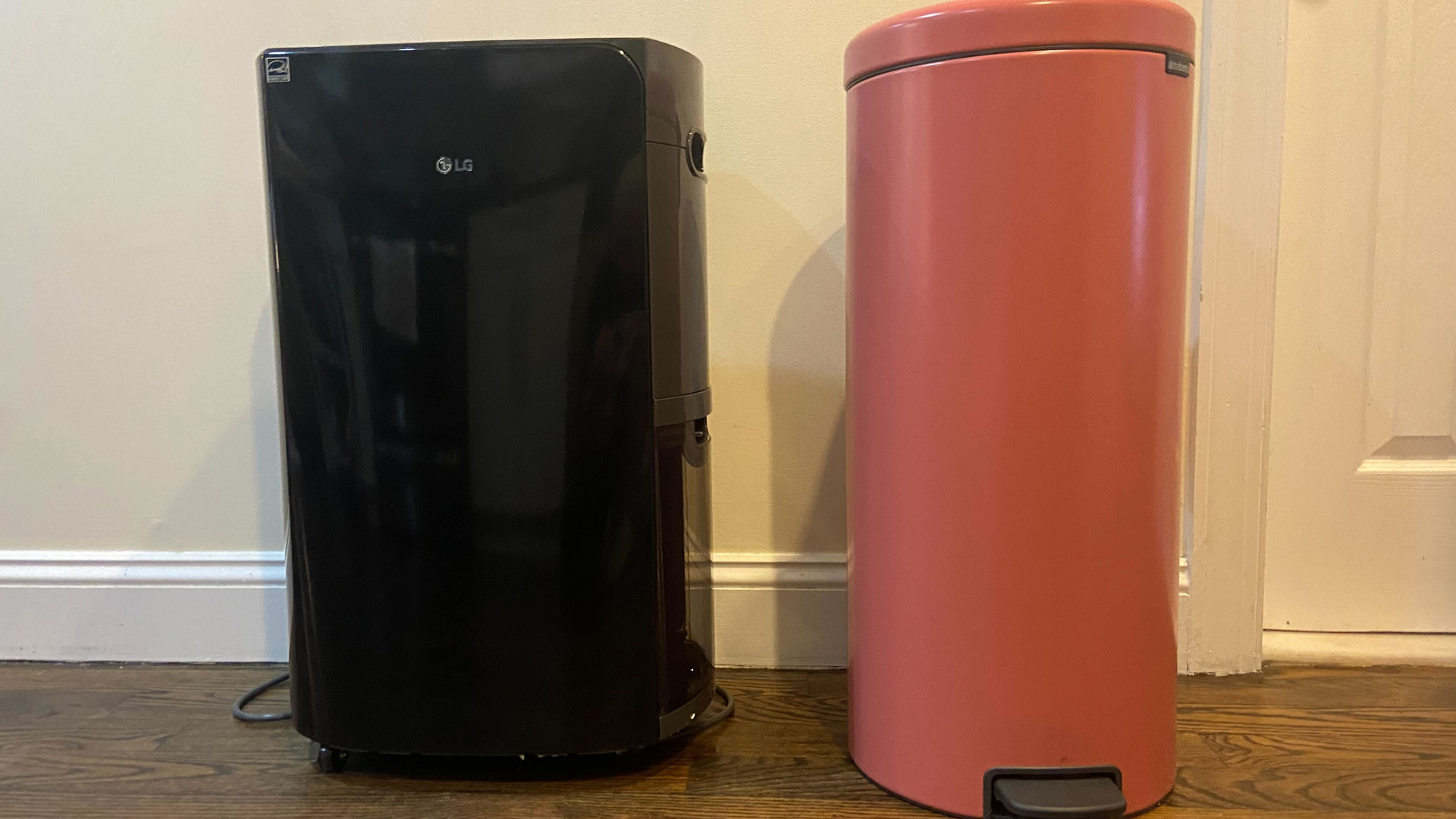
Specifications
Reasons to buy
Reasons to avoid
✅ You want a stylish appliance: This LG dehumidifier has all the looks.
✅ You are looking for a low-maintenance dehumidifier: It features an auto shut-off, humidity controls, and other useful features.
✅ You want something portable: This appliance has side pocket handles and castor wheels
❌ You are on a budget: It is certainly a pricey piece of kit.
❌ You need high customizability: This LG dehumidifier only features two fan speeds.
🔎 LG UD501KOG5: This stylish, quiet and portable 50-pint dehumidifier is a great option for large rooms ― as long as you do not mind its relatively limited features and a high price tag. ★★★
With its sleek black shell and unobtrusive good looks, this is one of the most stylish dehumidifiers on the market. We were also impressed by its automatic features, thermal resistant parts and intuitive controls. Thanks to its 50-pint capacity, this dehumidifier is a great option for large rooms and offices.
The LG UD501KOG5 also comes with a host of helpful features, from a continuous drain feature, meaning you don’t have to keep emptying the water tank, to a humidity auto control which allows you to set and maintain your preferred levels.
The device also has an alarm to inform you when the water tank is nearly full, at which point it also goes into automatic shut-off to prevent leaks. A safety standby mode once every 23 hours also ensures that overheating is never a problem.
During our LG Puricare 50-pint dehumidifier review, our tester found the appliance extremely simple to set up and turn on, with virtually no real assembly required. However, one significant drawback is that this dehumidifier only has two fan speeds, and there's no continuous mode. You also can't set the LG Puricare for a 24 hour cycle – the maximum is 12, which is unusual for a unit this size.
We tested the device in a bedroom that initallly measured at 45% humidity, setting the device to its highest setting to drop it to 30%. After an hour, it had dropped to 35%, and after ninety minutes had hit the required 30%. After two hours the bucket contained nearly three full cups of water, which was easy to remove to the removable lid. In fact, the bucket on the LG Puricare is one of the best we've seen. Removing and emptying it is incredibly easy thanks to a removable splash guard/lid which gives you optimal surface area for emptying out the tank.
The side pocket handles and castor wheels make it easy to move the dehumidifier from room to room, to wherever you need it most.
At 26.2 inches high, it’s certainly the tallest dehumidifier in our buying guide, so to take this into account when comparing models and deciding what is right for your own space.
- Read our full LG Puricare 50-pint dehumidifer review
| Attributes | Notes |
|---|---|
| Coverage | Up to 2,900 square feet |
| Humidity control | Manual and Auto, digital humidistat |
| Performance | Relatively quiet (58 dB) |
Best mini dehumidifier
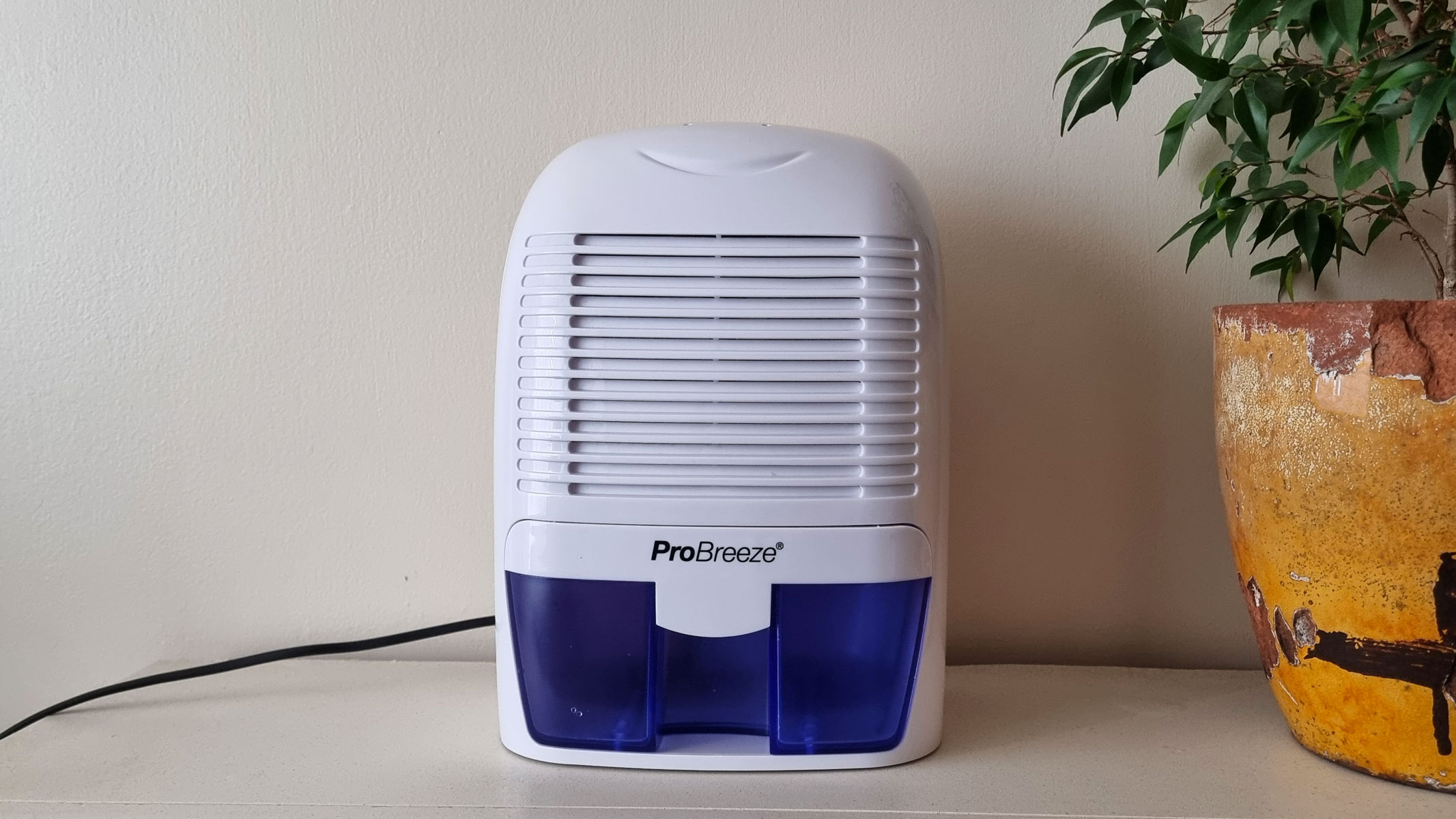
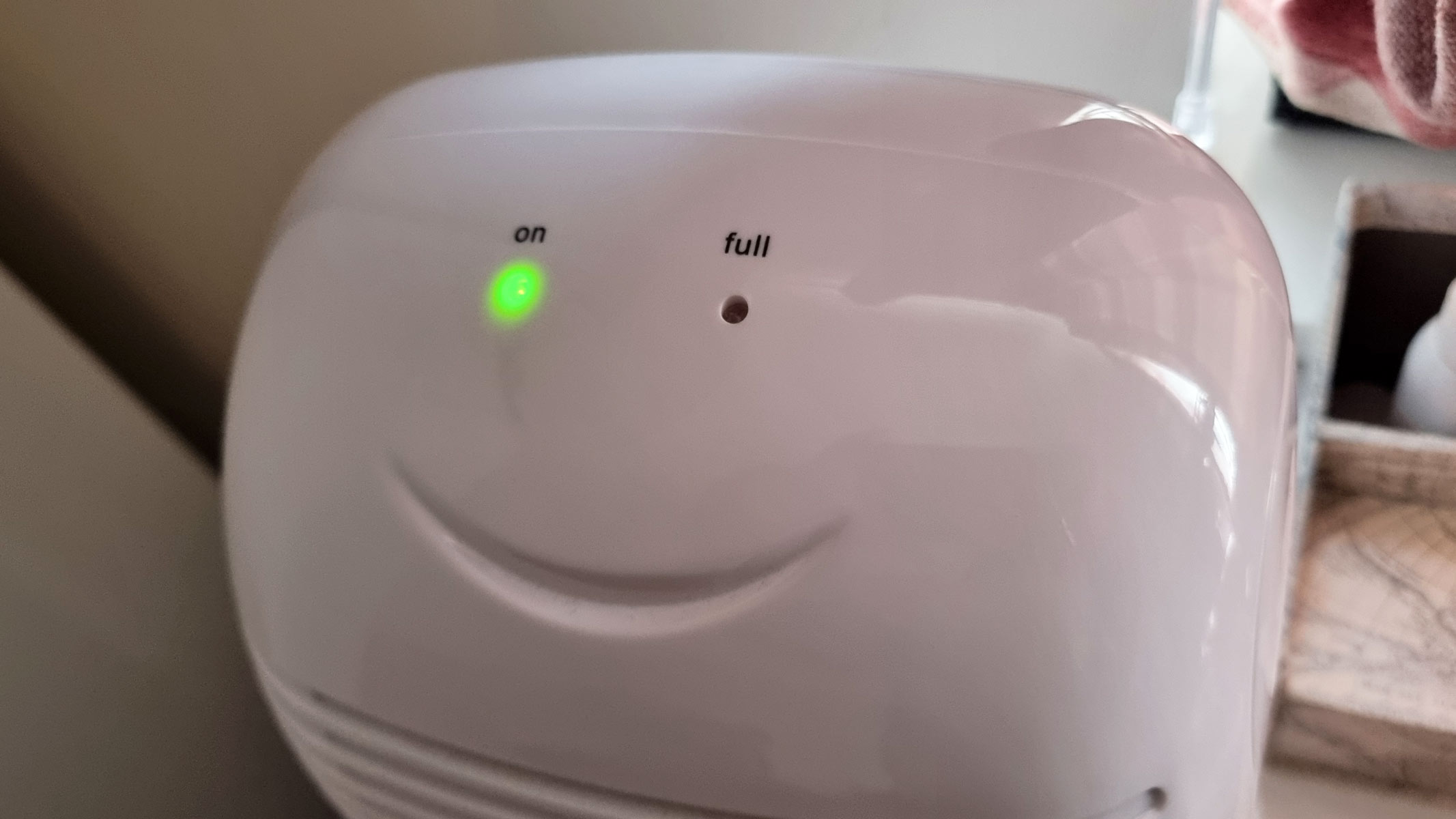
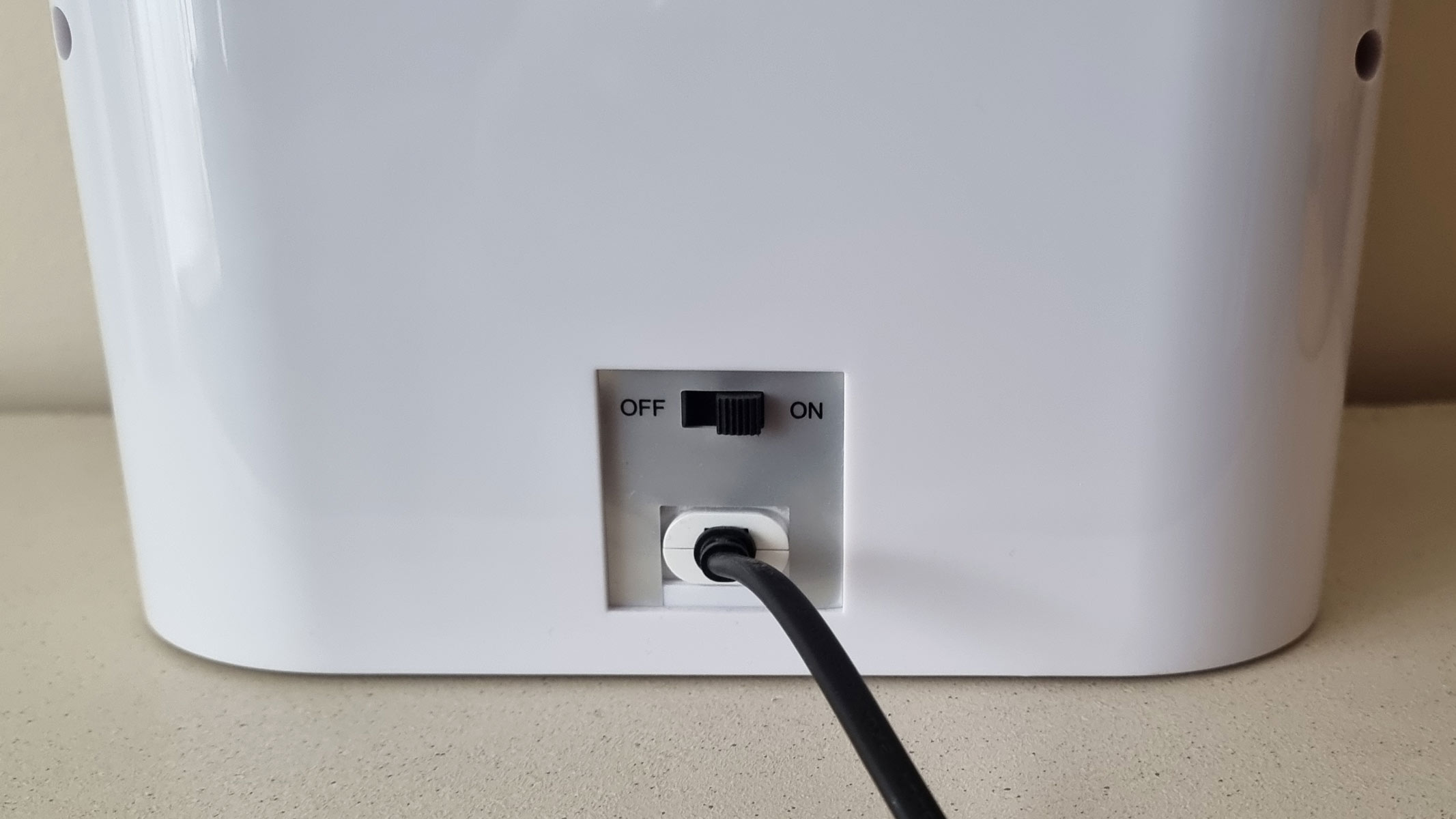
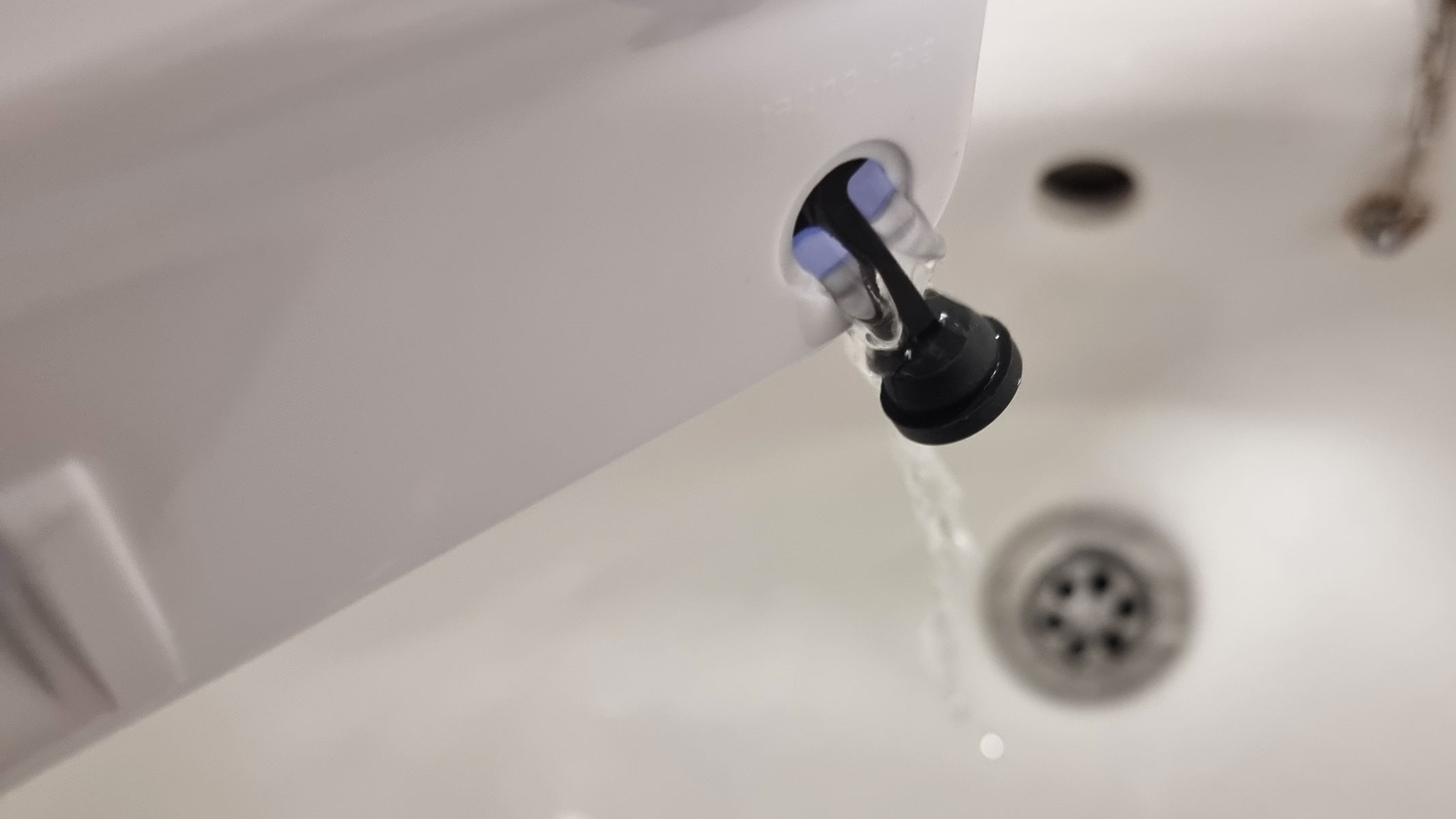
ProBreeze Mini Dehumidifier
Our expert review:
Specifications
✅ You want something compact and portable: This model is extremely light, easy to lift and move around.
✅ You are looking for a simple appliance: The design is undeniably basic but also very easy to use.
✅ You are on a budget: It is the most affordable option in this guide and is also relatively cheap to run.
❌ You want a drainage hose: You will need to empty the tank yourself.
❌ You need an auto mode: This dehumidifier simply has an on/off switch.
🔎 ProBreeze Mini Dehumidifier: The ProBreeze Mini Dehumidifier is exceptionally portable, easy to use, and relatively cheap to run, making it a great budget-friendly option for small spaces. However, as you might expect from the size and price, it doesn't offer any premium features. . ★★★½
The ProBreeze Mini Dehumidifier is our top choice for small spaces. It certainly doesn't have the most power or the most features on the market, but what it lacks in features it makes up for in affordability and size. It's also one of the quietest dehumidifiers we tested.
The ProBreeze Mini Dehumidifier may not offer high-octane performance, but then again, you can fit it on the top of a table. But despite its small size it is still very efficient, removing up to 18 ounces of water a day, and covering an area of 250 square feet. That's certainly not as high an extraction rate as other models in this guide, so we would not recommend it for large spaces, nor for very humid ones.
However, it does mean that the ProBreeze Mini Dehumidifier is relatively eco-friendly. It doesn't require a huge amount of power to run as it is not a compressor dehumidifier; instead, it uses Peltier technology. This is a method of extracting water that uses less electricity and makes less noise. Indeed, we did not notice any marked spikes in energy use during our ProBreeze Mini Dehumidifier review, and we liked how quiet it was, too. When we measured its noise levels with a decibel-counting app, it never exceeded 44 dB, which is equivalent to library sounds.
The refreshingly simple design is ready to use straight out of the box, and its controls could not be any more intuitive: there is simply one button to switch it on and off, and one LED light to indicate when the water tank is full. The tank can then be emptied through the opening in its lid. However, that is pretty much everything it offers. The ProBreeze Mini Dehumidifier offers no humidity meters, auto modes, smart features or other frills.
So if you want a dehumidifier brimming with high-tech features, then it is not the best option for you. But if you do want simplicity, ease of use and portability, then the ProBreeze Mini Dehumidifier is a great value pick.
- Full review coming soon
| Attributes | Notes |
| Coverage | Up to 250 square feet |
| Humidity control | Auto switch off |
| Performance | Quiet (up to 44 dB) |
Best dehumidifier for basements
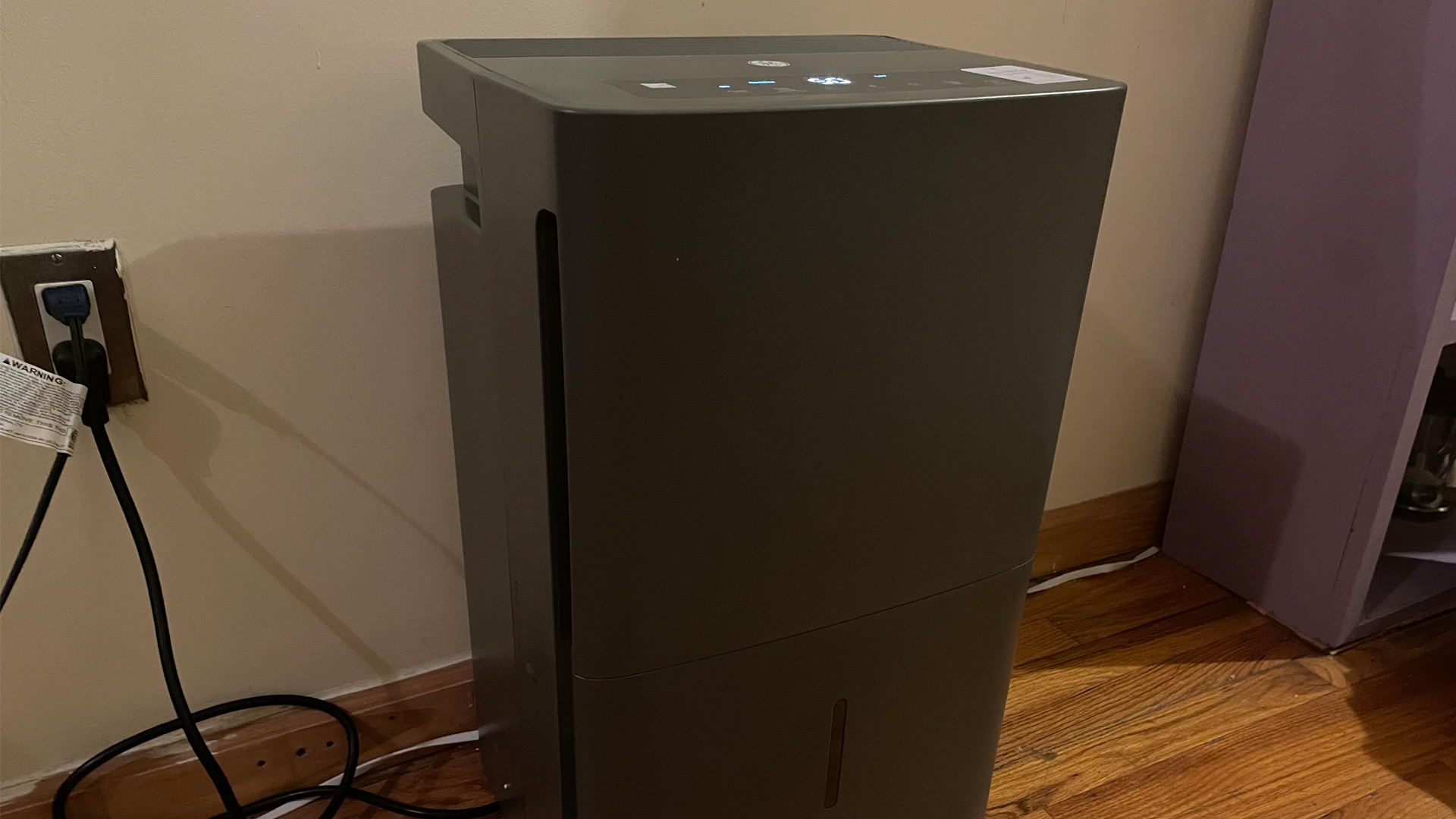
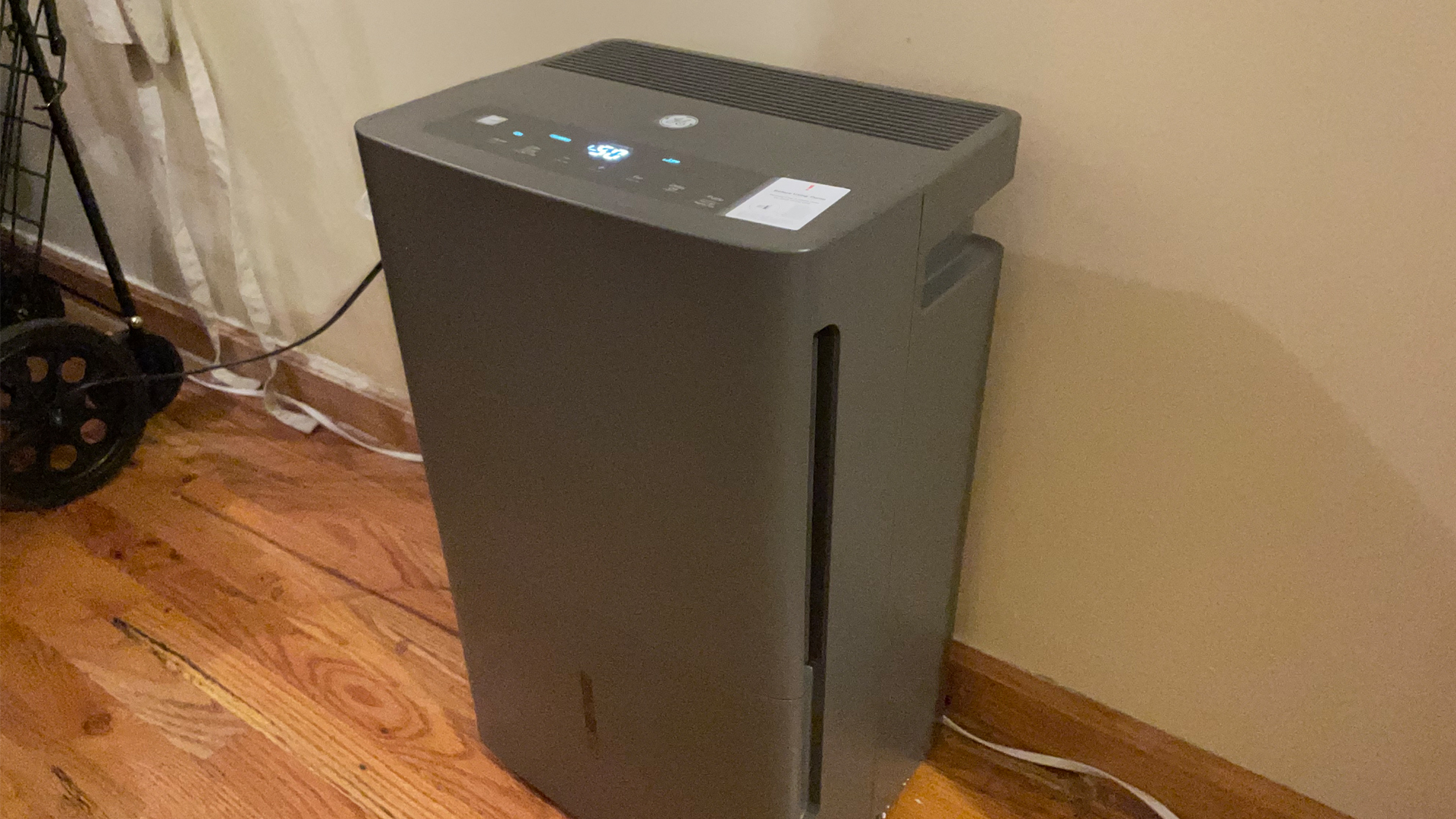
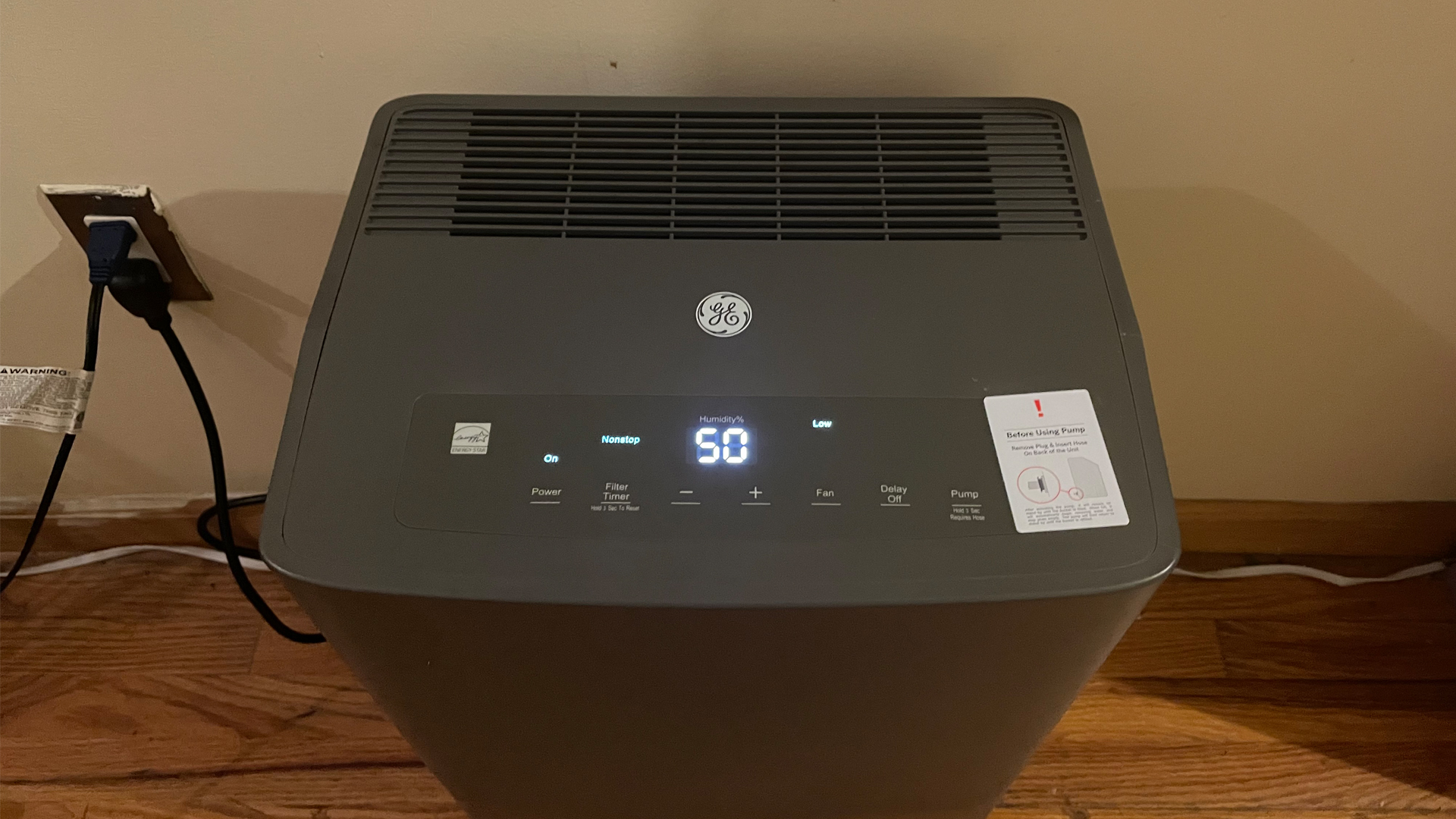
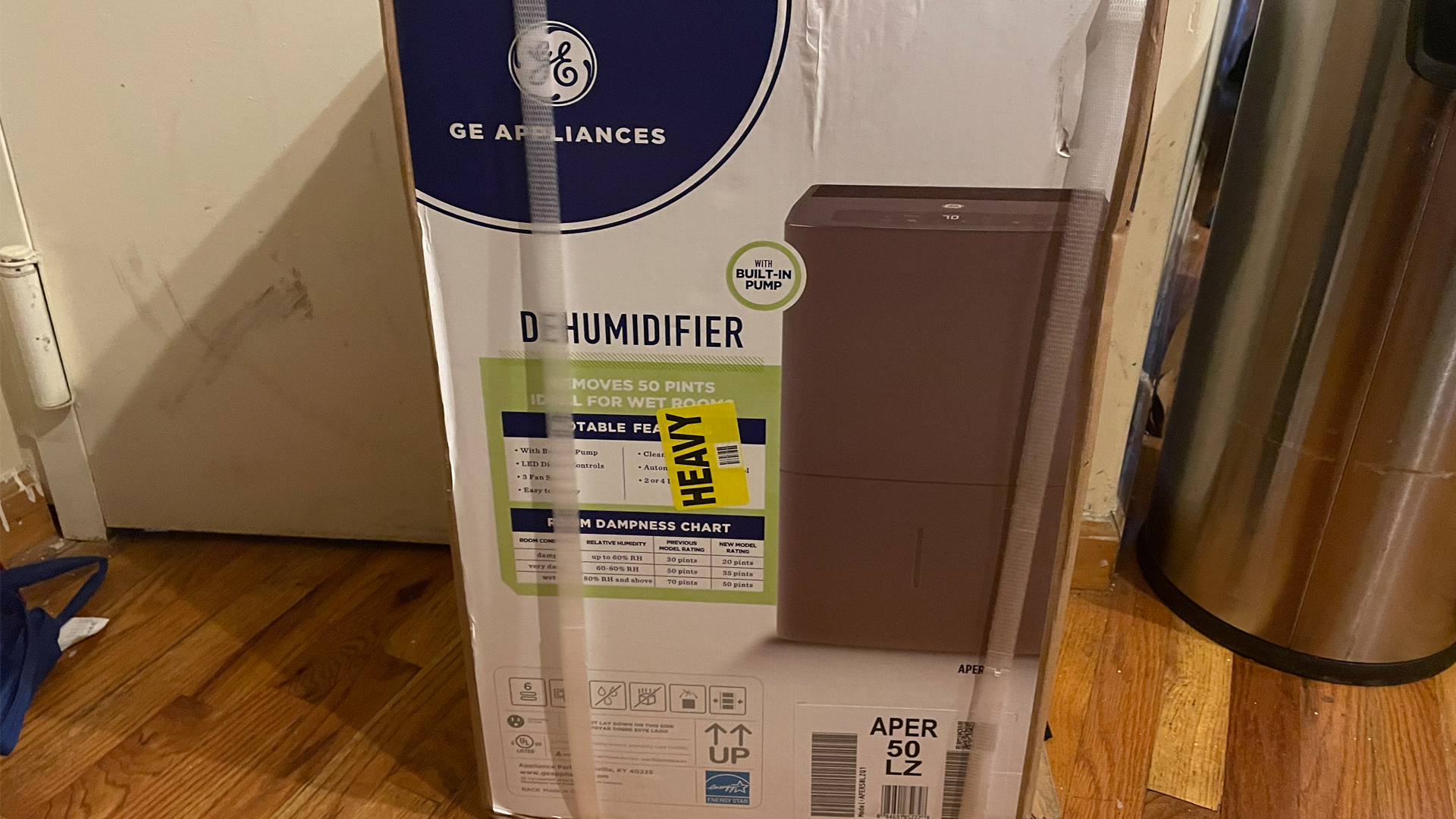
Specifications
Reasons to buy
Reasons to avoid
✅ You need to move it around a room: This GE dehumidifier features a long draining hose.
✅ You are looking for smart features: It comes with an auto shut-off, humidity controls, and more.
✅ You want something portable: This dehumidifier features built-in pocket handles and castor wheels.
❌ You want a dehumidifier that drains on its own: It shuts off when its tank is full.
❌ You need a comprehensive warranty: This GE dehumidifier offers a 1-year limited warranty.
🔎 GE Dehumidifier APER50LZ: Best suited for small spaces and basements, this portable dehumidifier is sleek, quiet and reliable. It does not, however, drain on its own. ★★★ ½
The GE Dehumidifier APER50LZ is portable and easy to use. It comes with a built-in active water pump and a capacity of 50 pints, which makes it a great option for small to medium-sized basements. The 16 ft-long hose helps with continuous water drainage, and you can therefore leave the unit running without worrying about it overflowing. It’s also really nicely designed, and comes in a sleek ‘stratus gray’ that makes it look more like a piece of tech than a household appliance, and makes it stand out from some of the ugly and bulky devices on the market.
When we tested the GE APER50LZ dehumidifier review, we were impressed by its good performance. On starting up the device, the humidity in the room was 55%, but it decreased to 40% after just an hour of running on the highest setting.
In fact the GE Dehumidifier APER50LZ actively monitors the humidity levels in your space and adjusts its settings accordingly between three fan speeds. It also features a ‘clean filter’ alert, so there’s no need to worry about forgetting when it’s time to clean away any dust and residue build-up.
The GE Dehumidifier APER50LZ also features an auto-shutoff and auto-restart. So if the water tank is full, it will automatically turn itself off to prevent leaks. Meanwhile if you have a power outrage, it will turn itself back on when the power returns.
In our testing, when we ran the device consistently, we found it needed to be emptied approximately once a day though of course this would depend on how humid the area you are using it in is.
While the device does offer continuous drainage via the hose, we did find that the water tank is easy to slide out and empty, so you don’t need to use the pump feature if you don’t want to. There is also a 10 second alarm for when the bucket is either full of water, or missing.
Castor wheels and in-built pocket handles make the GE Dehumidifier APER50LZ easy to move around the home, though it is certainly on the heavy side. An automatic defrost feature also ensures your machine keeps running, even when frost builds up on the coils inside.
- Read our full GE APER50LZ dehumidifier review
| Attributes | Notes |
|---|---|
| Coverage | Not stated |
| Humidity controls | Manual and Auto, digital humidistat |
| Performance | Relatively loud (65 dB) |
Best dehumidifiers: Comparison
| Product | Rating | ✅ Pros | ❌Cons | Coverage | Type | Capacity |
|---|---|---|---|---|---|---|
| Honeywell TP50WK | ★★★★ | Performance, features, ease of use. | No pump, short drainage hose. | 3,000 square feet | Refrigerator | 50 pints/ day |
| LG UD501KOG5 | ★★★ | Performance, stylish design, portability. | Limited features, price. | 2,900 square feet | Refrigerator | 50 pints/ day |
| GE Dehumidifier APER50LZ | ★★★ ½ | Performance, features, portability. | Limited features. | Unstated | Refrigerator | 50 pints/ day |
| ProBreeze Mini Dehumidifier | ★★★ ½ | Compact design, ease of use, portability. | Limited features, low extraction rate. | 250 square feet | Peltier | 3.25 pints/ day |
Our expert consultants

Kyle Knappenberger is the director of applications at Timilon Technology Acquisitions. He holds a degree in microbiology from Kansas State University, which he earned while researching and testing water purification techniques. For over a decade, Knappenberger has been working on using safe metal oxide technology for odor control and toxic chemical neutralization applications.

Wei-Ning Wang is an aerosols expert and associate professor at Virginia Commonwealth University. He is an editorial board member for several scientific journals, including Nanotechnology, KONA Powder and Particle Journal, Applied Sciences, Nanomaterials & Nanotechnology and is an advisory panel member for the Journal of Physics D. He told Live Science about the health risks posed by high humidity.

Kathy Przywara is the Vice President of Community at the Asthma and Allergy Foundation of America (AAFA). She supervises AAFA’s Support Center, an online community of healthcare professionals dedicated to providing patients with support and resources on asthma and allergy management.
Best dehumidifiers: Frequently Asked Questions
Do you need a dehumidifer?
Here are some of the signs that your home may benefit from a dehumidifier:
Your windows often have condensation.
There are signs of mold on your ceilings and walls.
There is a musty odor in your home.
You have wooden window sills that are soft and/or rotting.
There are water stains on the walls.
You, or members of your family, have persistent respiratory illnesses.
Someone in your home has a dust mite allergy.
There are unwanted pests in your home, such as cockroaches, moths, or silverfish.
Clothes smell damp even if they’re freshly washed.
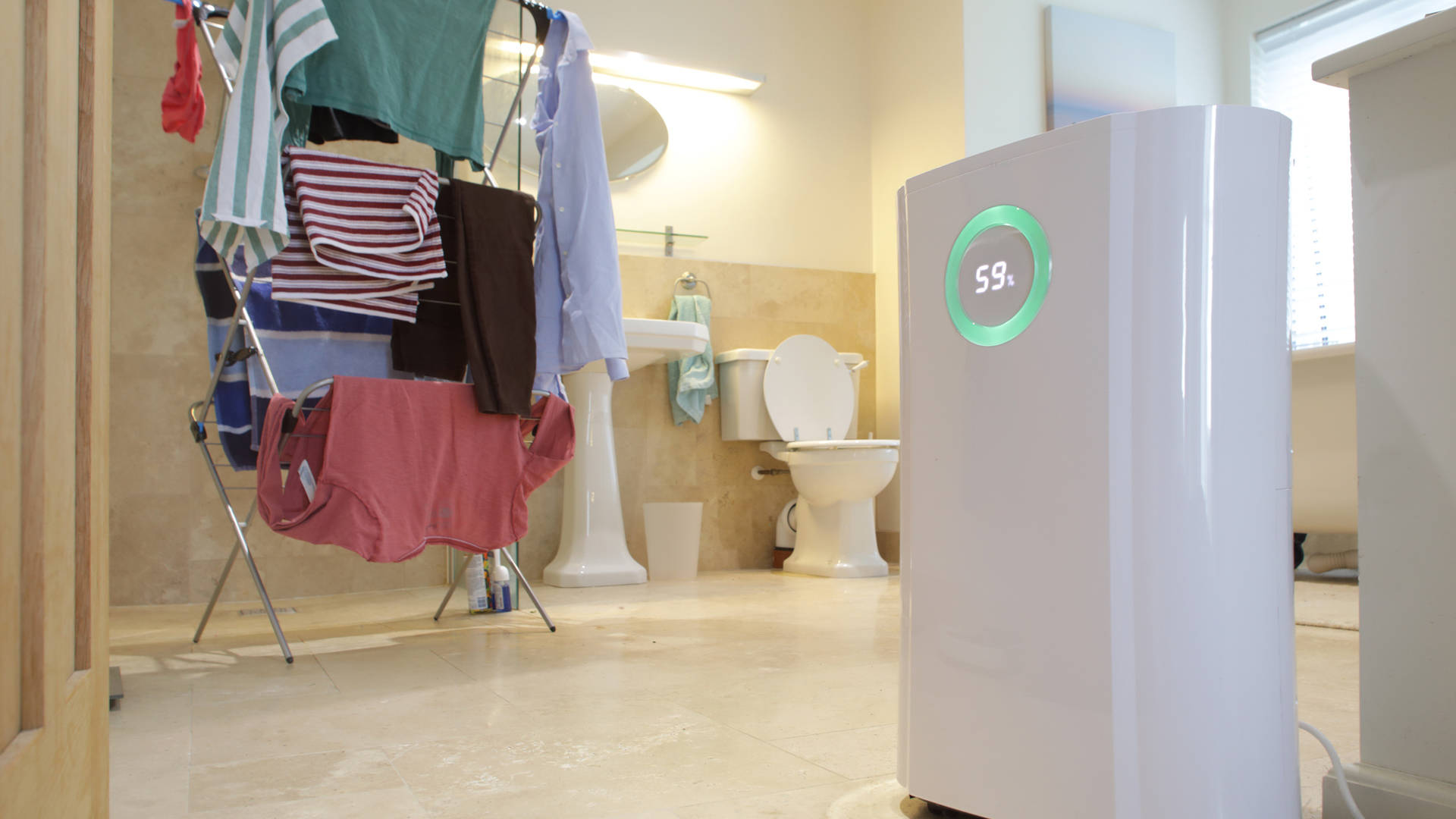
Are dehumidifiers worth it?
Dehumidifiers can significantly improve the quality of air indoors by reducing and keeping humidity levels in check. According to the Mayo Clinic, high humidity levels can increase condensation, triggering the growth of mold, harmful bacteria, and dust mites. And that can in turn cause respiratory problems, and even trigger allergy or asthma attacks.
Knappenberger explained to Live Science: “The benefits are mainly observed in warmer and moister climates by removing or reducing the amount of water in the air. In a home, this can also potentially lead to other issues with indoor air quality and mold issues. So reducing humidity can impact comfort and safety.”
What humidity is comfortable?
According to the Environmental Protection Agency, indoor humidity levels should be kept below 60%, and ideally fall somewhere between 30% and 50%.
A good dehumidifier with a digital display will give you a read out of humidity levels in your home, and allow you to set your preferred humidity levels accordingly. It will then continue to actively monitor and adjust its settings to keep humidity at your preferred levels.
Look for the term ‘humidistat’ in the appliance specifications, but if your dehumidifier does not have it, Energy Star suggests buying a hygrometer ― a gauge that measures humidity levels. Hang it somewhere near your dehumidifier, so you can monitor humidity levels and adjust your dehumidifier’s settings when you need to.
For more information, read more in our guide to what humidity is comfortable.
Are dehumidifiers expensive to run?
Dehumidifiers can certainly use a lot of electricity, but it depends on the model and is certainly not the case for all. All the appliances in our buying guide are Energy Star certified. This means that they can help you save money on your energy bills without sacrificing performance, features, or comfort. They also reduce greenhouse gas emissions. Choosing a dehumidifier that has the Energy Star label means that you’re saving almost 15% in running costs. So do look for that Energy Star label, to do your bit for the environment and save money in the process.
Do dehumidifiers help with allergies?
We go into this in more detail in our guide to whether dehumidifiers help with allergies. The short answer is in some cases, yes. For example, mold and dust mite allergens thrive in humid conditions, as Przywara said. Mold is a type of fungus that reproduces by releasing spores, and it can only grow in warm areas of high humidity, such as on bathroom walls, and in the trims and seals around windows, baths and showers.
Dust mites, on the other hand, are tiny, insect-like pests. They do not 'drink' water but have to absorb moisture from the air. This means they thrive in damper conditions and are less likely to survive in drier areas like deserts, according to the American Lung Association. "Using a dehumidifier, especially in areas prone to wetness, can help maintain healthy humidity levels and may reduce exposure to these allergens," Przywara said.
How to choose the best dehumidifier for you
What dehumidifier is best?
There are two main types of dehumidifier. The refrigerator dehumidifier works by using a fan to draw in moist air and passing it over coolant-cooled coils. The air is then warmed and dried and recirculated into your home. A desiccant dehumidifier, on the other hand, uses a heated, absorbent material to draw moisture out of the air and collect it in a water tank, which you then need to periodically empty. Both types of dehumidifiers can cool the room by reducing humidity, but they are not designed to lower the overall air temperature.
If your home is regularly heated, you may prefer to opt for a refrigerator dehumidifier, as these need the air in the room to be warmer than that inside the dehumidifier. Desiccant dehumidifiers are more efficient in cooler temperatures, so these may be a better option for cold basements, garages or conservatorys with issues of mold or mustiness.
What size dehumidifier do I need?
Its important to note that in 2019 the U.S. Department of Energy finalized new standards for dehumidifiers which better reflect the average temperature of a basement. This means that more recent models have a lower capacity.
However, that doesn't mean they are worse than older models. In fact, it simply means that the old 70-pint capacity is the same as a newer 50-pint capacity, because of these new testing regulations.
So how big of a dehumidifier do you need? According to Kyle Knappenburger, director of Technology for air filtration company Timilon Corporation, the size of the room is the most important factor. Make sure you choose an appliance that has sufficient capacity for the space it’s in, especially if you don’t want a continuously draining dehumidifier.
How we tested these dehumidifers
How we test the best dehumidifiers


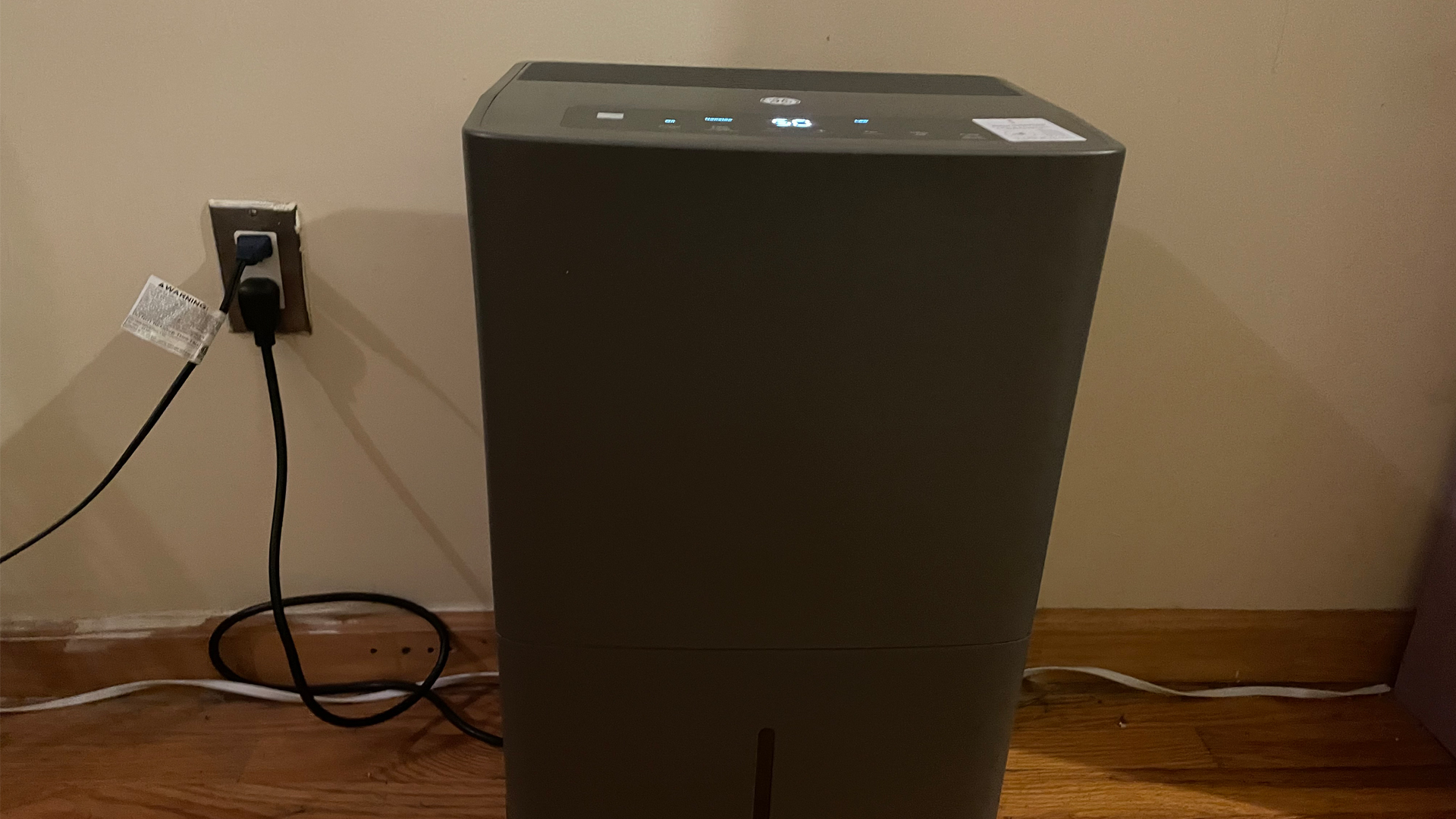
Our reviewers: Through extensive testing we have accumulated expert knowledge of dehumidifiers. Most of our expert reviewers live in areas of high humidity (for example, the often-rainy United Kingdom), and use these appliances on a daily basis. Over the years they have all tried and tested multiple dehumidifiers, so you can trust their verdicts.
To be as objective as possible, each dehumidifier in this guide has been tested to the exact same standards, using the same processes.
Design. When assessing the design of a dehumidifier, we take into account the size and looks of the unit, the cost of use and maintenance, the length and conditions of the warranty, the availability of additional parts, and overall ease of use. We check how easy it is to empty and clean the water tank, operate the controls or move the dehumidifier around. We also judge the aesthetics of the unit as well as its functionality.
Features. We look into the features of a dehumidifier to get a good understanding of what the unit has to offer. How many modes and settings does it have? Can it be operated remotely? Does it come with any smart features? Also, does it drain on its own, and if not, can it shut off automatically? We assess all these before giving our verdict.
Performance. We conduct several performance tests using industry-grade air particle monitors (such as the Perfect Prime AQ9600) to measure how much moisture the dehumidifier removes from the air, and to check whether anything impedes or speeds up this process. We start by noting the humidity level in an enclosed, middle-sized room. Then, we run the appliance on the highest setting for at least an hour. While the dehumidifier is running, we measure its noise level using a decibel-counting app (such as the Sound Meter app). After an hour, we measure the humidity level in the room and make note of any changes to the air quality. This process is repeated for each mode the unit has, such as lower mode and night mode. We also assess how quickly the water tank fills up and how often we need to empty it.
What the users say. Finally, we check online user reviews to see what users are saying about the product, and we test for any persistent problems or defects that we read about. We also make note of any comments regarding the customer service from the company.
As per our testing policy, we fully disclose all of our findings in our reviews.
Latest updates
February 3, 2025: We expanded the 'Comparison' table and updated the introduction.
Sign up for the Live Science daily newsletter now
Get the world’s most fascinating discoveries delivered straight to your inbox.
Joanne Lewsley is a UK-based freelance writer and editor, covering health and lifestyle news and features. She mainly creates evidence-based health and parenting content and has worked with a number of global sites, including BabyCentre UK, Medical News Today, Fit & Well, Top Ten Reviews, and Yahoo!
- Anna GoraHealth Writer











